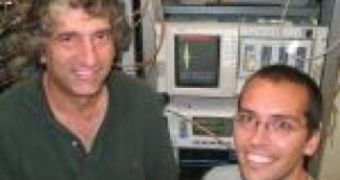Experts from the University of California in Santa Barbara (UCSB) have recently announced that they managed to create a new type of circuit that behaves in a quantum mechanic manner. They say that the innovative device does not have the regular two levels of energy, but that it boasts a full five of them. Details of the remarkable achievement appear in the August 7th issue of the prestigious journal Science. Researchers from the University of Georgia were also involved.
The UCSB experts explain that these circuits behave in very much the same way individual atoms do, in that they can shift from one state of energy to another. The way these structures can do so is by exchanging energy packets known as quanta. When they receive or lose quanta, they essentially jump from one energy level to the other. In average computers, the bits – the basic unit of calculation - only have two energy states, “on” and “off,” but the new circuits that were devised at the university have five such layers of energy.
“In our previous work, we focused on systems with just two energy levels, 'qubits,' because they are the quantum analog of 'bits,' which have two states, on and off’,” explains the first author of the new study, UCSB graduate student Matthew Neeley. The new quantum mechanical circuit was called a “qudit,” as an analogy to the qubit (a quantum bit). The letter “d” indicates the number of energy layers the construct has, and in this case, d=5.
“This is the quantum analog of a switch that has several allowed positions, rather than just two. Because it has more energy levels, the physics of a qudit is richer than for just a single qubit. This allows us to explore certain aspects of quantum mechanics that go beyond what can be observed with a qubit,” Neeley adds.
“Qudits can be used in quantum computers as well, and there are even cases where qudits could be used to speed up certain operations with a quantum computer. Most research to date has focused on qubit systems, but we hope our experimental demonstration will motivate more effort on qudits, as an addition to the quantum information processing toolbox,” the expert concludes.

 14 DAY TRIAL //
14 DAY TRIAL //